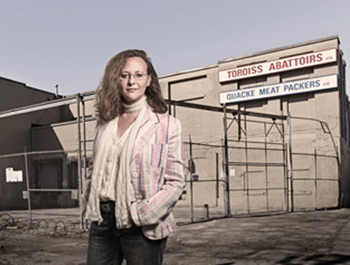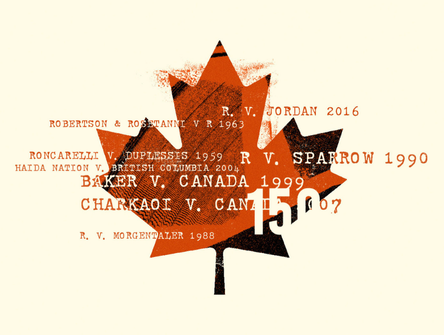The animal advocate
Your next client might have four legs: How animal law is moving from the fringes to the mainstream — and creating new challenges for lawyers.
.jpg?ext=.jpg)
In 2006, Jennifer Friedman was practically laughed out of court when she sought a fine for the wrongful death of a racoon at the hands of a pensioner.
Fast-forward five years and nobody was laughing when a judge imposed a $1,000 fine and two years of probation in another senseless racoon killing. Later that year, another judge handed down a 10-month jail term for the death of a dog; the Crown had asked for six.
“It was a fairly significant penalty, says Friedman, who worked as in-house counsel for the Ontario SPCA at the time. “And it’s also, I think, a significant signal to society that judges are actually taking these cases very seriously when they are brought forward.”
In fact, you don’t have to work for the SPCA or represent the Ikea monkey to become entangled in animal law issues. As animals occupy increasingly important roles in the lives of their companion humans, cases involving their care and custody are popping up in lawyers’ offices across the country. Animal law also captures everything from veterinary malpractice to criminal cases of animal cruelty — and society is still sorting out how animals should be treated under the law, making the emerging practice area a challenge.
“I think it’s critical to recognize the practice area as animal law as opposed to animal rights or animal welfare, because there is such a huge spectrum of what is ‘animal law,’” says Friedman, currently litigation counsel for the Ontario Racing Commission. She started CBA’s animal law section in Ontario, one of two in Canada.
“You have animal rights on the one hand, you have animal welfare in the middle, and then on the other end you’ll have landowners’ groups that don’t see there should be any state intervention or regulation of practices as it relates to the land or animals.”
That spectrum is created at least in part by animals’ standing — or lack of it — in law. Ontario created a broad animal cruelty provision when it overhauled its provincial statute five years ago, says Friedman, but there is no uniformity of treatment at the municipal or provincial level. At the federal level, animals are captured under Part 11 of the Criminal Code relating to property.

Lesli Bisgould is an adjunct professor at the University of Toronto who literally wrote the book on animal law; her textbook is used in some of the growing number of animal law courses in the country. She says there is a “structural problem” in animal welfare laws.
“The Criminal Code is a good example of … how the law will stop us from causing gratuitous harm to dogs and cats but will also be sure to allow that harm to be done to cows and pigs. And it does that by its terminology. It doesn’t prohibit us causing pain and suffering to animals, but prohibits us causing unnecessary pain and suffering,” she says.
“As soon as you see that the law is permitting us to cause necessary pain and suffering, we can hurt animals as we see fit.”
There has been broad public support for efforts to move animals out of the property section of the Criminal Code and treat them as sentient beings, but Bisgould says industry lobbyists “organized in mind-blowing ways” to keep it from happening. But there is plenty of blame to go around, she adds.

Photo by Pierre Charbonneau
“We want [animals] to be our family members and our friends, we want them to be our dinner, our entertainers, our transportation; we expect them to fulfil every role under the sun, and many of them quite conflicting. So I take that and think, well, if we as a society can’t decide what sort of role animals are going to play then how can we really blame law for its confusion?”
Meanwhile, couples in some divorce cases are spending more time fighting over custody of the family dog than over millions of dollars in conjugal assets, says Rebeka Breder, an associate with Boughton Law in Vancouver who divides her practice evenly between animal law and corporate litigation.
“There’s a judgment out in Saskatchewan where the judge specifically said that it’s a waste of time and the partners should try and sort these issues outside of the courtroom, but then you get some judges … that go out of their way to actually rule in what’s in the best interests of companion animals” — the standard used in child custody decisions.
Breder, who founded the CBA BC branch’s animal law section and teaches the University of British Columbia’s first-ever course in animal law, says the practice area is slowly evolving.
“I tell my students animal law is where environmental law was about 20 years ago, where environmental law as a discipline didn’t exist,” she says. “Lawyers didn’t say that they practise environmental law; they just had issues dealing with environmental problems in their practice. And then slowly they started to develop a discipline called environmental law and that’s where I see animal law going, hopefully in less than 20 years from now.”
There are still naysayers — Swiss ethnologist Jacques Hainard calls animal welfare activism “misdirected anthropomorphism” — but the field of animal law is growing in stature both in academia and in Canadian courtrooms.
“There are judges who are furious to have to deal with a dispute over a dog,” says Bisgould. “They find it is a degrading waste of court time.”

is a beloved member of the Breder family.
She points out however, that in Reece v. Edmonton (City) a dissenting opinion from Chief Justice Catherine Fraser “was a treatise for the modern animal movement” even though it didn’t help Lucy the elephant (animal activists lost their case to have the lone elephant at an Edmonton zoo moved to warmer climes.)
“If the Chief Justice of Alberta will take all of these months to write a thoughtful decision on behalf of animals, then she has now told us that times are changing.”
Breder and Friedman both believe that legitimacy for the discipline will be found in the civil and criminal courts. A reluctance to commit scarce court resources to prosecutions, and the knowledge that damages awarded in civil animal welfare cases often won’t cover the legal fees keep many such cases from going to court.
More prosecutions are necessary and legislative changes could be helpful, but that isn’t the beginning or the end of the question for Friedman.
“We have to understand that the very notion of any right for animals is novel to many interests, and derogates significantly from our country’s heritage, which includes some of those agricultural practices,” she says.
“I don’t know that there’s necessarily a need for a legislative shift, as opposed to more of a paradigm shift from society as to what society is prepared to consider appropriate treatment of animals.”


